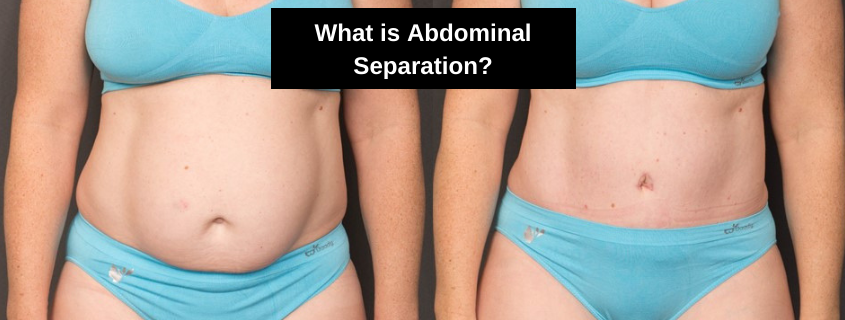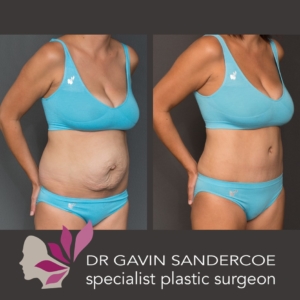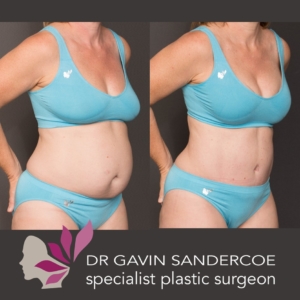
Abdominal muscle separation, also known as diastasis of rectus abdominis muscle (DRAM), occurs for some women during and after pregnancy. Muscle separation can correct itself in some women, but it is estimated that up to 1 in 3 women still suffer from the condition permanently after childbirth. Dr Gavin Sandercoe, Specialist Plastic Surgeon in Sydney, performs a large number of abdominoplasties to treat muscle separation and answered some of our questions about it.
The new Medicare Item Number 30175 may also help subsidise your abdominoplasty surgery if you meet the strict conditions.
What causes Muscle Separation?Dr Sandercoe explains that muscle separation is caused by the growing baby in the uterus pushing the two long, parallel muscles of your stomach to separate. As the baby grows, there is only so much space that the core muscles can create by stretching before something else needs to stretch to allow the growth of the baby. At this point, the linea alba (midline tendon between the rectus muscles) begins to widen and allow the abdomen greater expansion.
“It is more common in women having more than one baby at a time, ie. twins or triplets, but can just as easily happen with a single child, especially in smaller or more petite women carrying larger babies or a woman after multiple single births.”
Women that are older when they have children have less chance of the muscle separation healing itself, as are women that have babies close together. It can also be caused by the hormonal changes that pregnancy triggers, or… it can just happen.
What does Muscle Separation look like? What are the Symptoms of Muscle Separation?
Muscle separation presents as a bulge in your belly, particularly when you are more active. Dr Sandercoe says, “It can also cause lower back pain due to the stomach muscles no longer able to properly support the back. Muscle separation can also lead to incontinence because of the loosened muscles and lack of core strength.”
Although there are certain things you can do to prevent or reduce your risk of muscle separation before and during pregnancy – such as increasing your core muscle strength before you get pregnant and avoiding too much exertion or stress on your stomach while you’re pregnant (avoiding too many sit-ups, planks or too much coughing!). Once rectus separation is evident, it can be extremely difficult to treat and is often not able to be corrected by even the most dedicated diets, exercise and care. If the muscles have become so stretched or damaged there comes a point where they will never fully come together without medical intervention – abdominoplasty.
You can get ultrasound assessment of your rectus separation and this should be performed with the muscles relaxed and contracting for comparison measurements. At this stage, tests/proof like this may help your surgeon explain your procedure to you, but they have no impact on your amount of financial support from Medicare or your private health fund.
Abdominoplasty to fix Abdominal Separation
Abdominoplasty to fix muscle separation involves pulling the muscles back and suturing them into their original position. Abdominoplasty (or tummy tuck) also involves the surgeon removing any excess skin and fat, helping to create a toned and taut appearance. The external tightness through the fascial network running around your muscles and fat is important in helping to correct the core muscle function.

If you think you might have abdominal muscle separation see your GP or a plastic surgeon for a consultation, or if you’d like to arrange a consultation with Dr Gavin Sandercoe visit his PSH profile.
For more information about Abdominal Separation
For more information about Abdominoplasty
- What Is Diastasis Recti? – Split Tummy Muscles – Dr Michael Kernohan
- Mummy Makeover in Sydney – Soliman Plastic Surgery – Dr Bish Soliman
- Diastasis Recti Surgery: Repairing Abdominal Muscles – Dr Carmen Munteanu FRACS (Plas)
- Belly Bulge After Baby: Diastasis Recti or Abdominal Fat? – Dr Guy Watts
- What Does a Torn Stomach Muscle Feel Like | GCPS – Dr Mark Doyle



